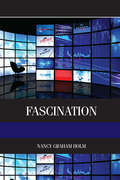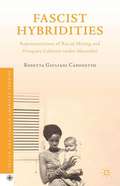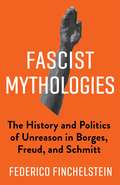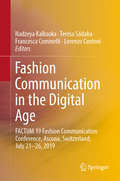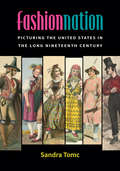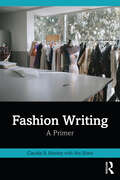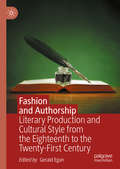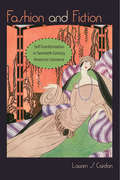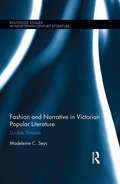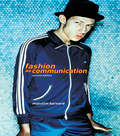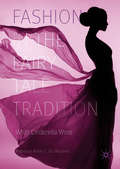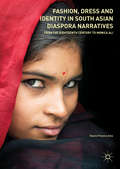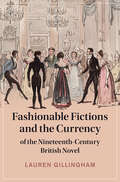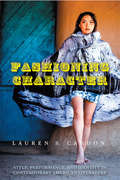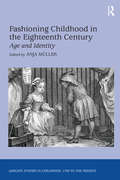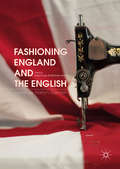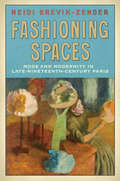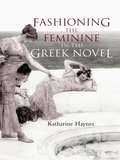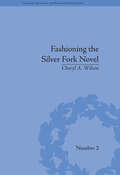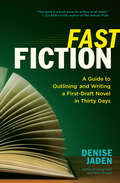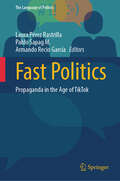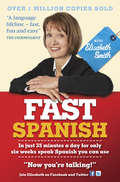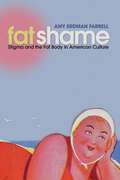- Table View
- List View
Fascination: Viewer Friendly TV Journalism
by Nancy Graham HolmDeveloped from the established traditions of print and radio journalism, television journalism has often failed to reach its potential to develop away from these other media. However, because of the synthesis of words, pictures, and sound, television journalism has the ability to shift from simply reporting the news to weaving stories. In Fascination, veteran television journalist Nancy Graham Holm incorporates years in the field and extensive teaching experience to produce an instructive and entertaining guide to all aspects of television journalism. With a dual focus on aesthetics and technique, this book instructs the reader on the best way to use visuals and sound, different reporting techniques, and appropriate behaviour for journalists. Each chapter benefits from real-world examples and helpful tips to guide the reader through each stage of television journalism. This book is an excellent guide for those wanting to start a career in television journalism as well as seasoned professionals wishing to gain a new perspective.
Fascist Hybridities
by Rosetta Giuliani CaponettoWhile less explicitly racist than its Germany Nazi counterpart, Italian Fascism attached considerable importance to racial purity. Fascist Hybridities examines how Italian literature and cinema of the 1930s are traversed by hybrid figures, and how these works ultimately reveal biracial offspring and Levantines as interchangeable characters who, in the historical scenario under which Mussolini’s Fascist regime operated, present unique and specific threats to notions of Italian racial and cultural purity. As Rosetta Giuliani-Caponetto shows, that more often than not, the visual and textual presence of mulatto and Levantine characters stoked deep racial and cultural anxieties, forcing their audiences to uncomfortably examine, rather than confirm, their own collective identity.
Fascist Mythologies: The History and Politics of Unreason in Borges, Freud, and Schmitt (New Directions in Critical Theory #79)
by Federico FinchelsteinFor fascism, myth was reality—or was realer than the real. Fascist notions of the leader, the nation, power, and violence were steeped in mythic imagery and the fantasy of transcending history. A mythologized primordial past would inspire the heroic overthrow of a debased present to achieve a violently redeemed future. What is distinctive about fascist mythology, and how does this aspect of fascism help explain its perils in the past and present?Federico Finchelstein draws on a striking combination of thinkers—Jorge Luis Borges, Sigmund Freud, and Carl Schmitt—to consider fascism as a form of political mythmaking. He shows that Borges’s literary and critical work and Freud’s psychoanalytic writing both emphasize the mythical and unconscious dimensions of fascist politics. Finchelstein considers their ideas of the self, violence, and the sacred as well as the relationship between the victims of fascist violence and the ideological myths of its perpetrators. He draws on Freud and Borges to analyze the work of a variety of Latin American and European fascist intellectuals, with particular attention to Schmitt’s political theology. Contrasting their approaches to the logic of unreason, Finchelstein probes the limits of the dichotomy between myth and reason and shows the centrality of this opposition to understanding the ideology of fascism.At a moment when forces redolent of fascism cast a shadow over world affairs, this book provides a timely historical and critical analysis of the dangers of myth in modern politics.
Fashion Communication in the Digital Age: FACTUM 19 Fashion Communication Conference, Ascona, Switzerland, July 21-26, 2019
by Lorenzo Cantoni Nadzeya Kalbaska Teresa Sádaba Francesca CominelliThis book represents a major milestone in the endeavour to understand how communication is impacting on the fashion industry and on societal fashion-related practices and values in the digital age. It presents the proceedings of FACTUM 19, the first in a series of fashion communication conferences that highlights important theoretical and empirical work in the field. Beyond documenting the latest scientific insights, the book is intended to foster the sharing of methodological approaches, expand the dialogue between communications’ studies and fashion-related disciplines, help establish an international and interdisciplinary network of scholars, and offer encouragement and fresh ideas to junior researchers. It is of high value to academics and students in the fields of fashion communication, fashion marketing, visual studies in fashion, digital transformation of the fashion industry, and the cultural heritage dimension of fashion. In addition, it is a key resource for professionals seeking sound research on fashion communication and marketing.
Fashion Nation: Picturing the United States in the Long Nineteenth Century
by Sandra TomcFashion Nation argues that popular images of the United States as a place of glitter and lights, of gaudy costumes and dizzying visual surfaces—usually understood as features of technomodernity—were in fact brewed in the rich, strange world of early nineteenth-century British and European folk nationalism when nations were compelled to offer visual manifestations of their allegedly true ancestral form. Showing that folk and ethnic nationalism played a central role in writing and culture, the book draws on a rare and colorful visual archive of national costumes, cartoons, theatrical spectacles, and immersive entertainments to show how the United States sprung to life as a visual space for transatlantic audiences. Fashion Nation not only includes chapters on major U.S. travel writers like Nathaniel Parker Willis and James Fenimore Cooper, but it also presents explorations of the vogue for folk and ethnic costume, the role of Indigenous dress in Wild West spectacles, and the nationalistic décor on display at late nineteenth-century world’s fairs and amusement parks. Engagingly written and beautifully illustrated, Fashion Nation opens the door to a forgotten legacy of visual symbols that still inhabit ethnic and white nationalism in the United States today, showing how fantasies of glittery surfaces were designed to draw the eye away from a sordid history.
Fashion Writing: A Primer
by Claudia B. Manley Abi SloneActing as a comprehensive primer for the field of fashion writing, this book provides an accessible entry point for readers from diverse backgrounds, giving them a clear understanding of the intricacies of fashion writing, the outlets in which it appears, and the possibilities beyond the page. Fashion Writing: A Primer lays out a framework for various types of fashion writing (runway and trend reports, service pieces, features, and more), while offering students a solid foundation of fashion history, cultural touchstones, common fashion terminology, and contemporary issues affecting the fashion industry today. Featuring interviews with current fashion journalists, such as Robin Givhan, Sarah Mower, Charlie Porter, and Amanda Winnie Kabuiku, as well as annotated bibliographies centred on the themes of each chapter, this book delivers fashion writing essentials for anyone interested in the field. Readers will come away aware of the many influences on the fashion world, helping them establish credibility as a fashion writer. Covering both print and online outlets, this is a valuable text for students with an interest in fashion communication, journalism, and fashion media, as well as early career fashion professionals looking for a complete guide to the industry.
Fashion and Authorship: Literary Production and Cultural Style from the Eighteenth to the Twenty-First Century (Palgrave Studies In The Enlightenment, Romanticism And Cultures Of Print Ser.)
by Gerald EganStudies of fashion and literature in recent decades have focused primarily onrepresentations of clothing and dress within literary texts. But what about theauthor? How did he dress? What where her shopping practices and predilections?What were his alliances with modishness, stylishness, fashion? The essays in thisbook explore these and other questions as they look at authors from theeighteenth century through the postmodern and digital eras, cultural producerswho were also men and women of fashion: Alexander Pope, Hester Thrale, MaryRobinson, Lord Byron, William Thackeray, Charlotte Bronte, Wilkie Collins,Margaret Oliphant, Virginia Woolf, Rebecca West, Trudi Kanter, Angela Carter,and Martin Margiela. The essays collected here ultimately converge upon afundamental question: what happens to our notions of timeless literature whenauthorship itself is implicated in the transient and the temporary, the cycles andmaterials of fashion?“Gerald Egan’s provocative introduction to this exciting new book poses a boldquestion: How are authorship and literature – so often linked to ideas oftranscendence – implicated in the transient trends and stuff of fashion? Thethirteen chapters that follow track authorship’s complex implication in thediscourses and materiality of fashion and fashionable goods from the eighteenthto the twentieth centuries. Wide-ranging in discipline and chronology, yetforensically focused and carefully argued, this book makes a striking andwonderfully original contribution to studies of authorship, celebrity and materialculture.”— Dr Jennie Batchelor, Professor of Eighteenth-Century Studies,University of Kent, UK
Fashion and Fiction: Self-Transformation in Twentieth-Century American Literature (Cultural Frames, Framing Culture)
by Lauren S. CardonDuring the twentieth century, the rise of the concept of Americanization--shedding ethnic origins and signs of "otherness" to embrace a constructed American identity--was accompanied by a rhetoric of personal transformation that would ultimately characterize the American Dream. The theme of self-transformation has remained a central cultural narrative in American literary, political, and sociological texts ranging from Jamestown narratives to immigrant memoirs, from slave narratives to Gone with the Wind, and from the rags-to-riches stories of Horatio Alger to the writings of Barack Obama. Such rhetoric feeds American myths of progress, upward mobility, and personal reinvention. In Fashion and Fiction, Lauren S. Cardon draws a correlation between the American fashion industry and early twentieth-century literature. As American fashion diverged from a class-conscious industry governed by Parisian designers to become more commercial and democratic, she argues, fashion designers and journalists began appropriating the same themes of self-transformation to market new fashion trends. Cardon illustrates how canonical twentieth-century American writers, including Edith Wharton, Theodore Dreiser, F. Scott Fitzgerald, Ernest Hemingway, and Nella Larsen, symbolically used clothing to develop their characters and their narrative of upward mobility. As the industry evolved, Cardon shows, the characters in these texts increasingly enjoyed opportunities for individual expression and identity construction, allowing for temporary performances that offered not escapism but a testing of alternate identities in a quest for self-discovery.
Fashion and Narrative in Victorian Popular Literature: Double Threads (Routledge Studies in Nineteenth Century Literature)
by Madeleine C. SeysWe know that way we dress says a lot about us. It’s drilled into us by our parents as children, as adults throughout our working lives, and eternally from the culture surrounding us. Our dress tells the outside world of the culture and era we come from to our social status within that culture. Our dress can be telling of our political views, religious beliefs, sexuality and countless other identifying traits that we can keep hidden or show to the world by our choice of what to wear when heading venturing out. This was absolutely true, famously so, in the Victorian Era in which men and women alike wore their status on their often lavish, embellished sleeves. In her new book, Dr. Madeleine Seyes explores Victorian culture through the lens of fashion in her new book, Double Threads: Fashion and Victorian Popular Literature, which sits at the intersection of the fields of Victorian literary studies, dress and material cultural studies, feminist literary criticism, and gender and sexuality studies.
Fashion as Communication
by Malcolm BarnardWhat kinds of things do fashion and clothing say about us? What does it mean to wear Gap or Gaultier, Milletts or Moschino? Are there any real differences between Hip-Hop style and Punk anti-styles? In this fully revised and updated edition, Malcolm Barnard introduces fashion and clothing as ways of communicating and challenging class, gender, sexual and social identities.Drawing on a range of theoretical approaches from Barthes and Baudrillard to Marxist, psychoanalytic and feminist theory, Barnard addresses the ambivalent status of fashion in contemporary culture.
Fashion in the Fairy Tale Tradition: What Cinderella Wore
by Rebecca-Anne C. Do RozarioThis book is a journey through the fairy-tale wardrobe, explaining how the mercurial nature of fashion has shaped and transformed the Western fairy-tale tradition. Many of fairy tale’s most iconic images are items of dress: the glass slippers, the red capes, the gowns shining like the sun, and the red shoes. The material cultures from which these items have been conjured reveal the histories of patronage, political intrigue, class privilege, and sexual politics behind the most famous fairy tales. The book not only reveals the sartorial truths behind Cinderella’s lost slippers, but reveals the networks of female power woven into fairy tale itself.
Fashion, Dress and Identity in South Asian Diaspora Narratives
by Noemí Pereira-AresThis book is the first book-length study to explore the sartorial politics of identity in the literature of the South Asian diaspora in Britain. Using fashion and dress as the main focus of analysis, and linking them with a myriad of identity concerns, the book takes the reader on a journey from the eighteenth century to the new millennium, from early travel account by South Asian writers to contemporary British-Asian fictions. Besides sartorial readings of other key authors and texts, the book provides an in-depth exploration of Kamala Markandaya’s The Nowhere Man (1972), Hanif Kureishi’s The Buddha of Suburbia (1990), Meera Syal’s Life Isn’t All Ha Ha Hee Hee (1999) and Monica Ali’s Brick Lane (2003).This work examines what an analysis of dress contributes to the interpretation of the featured texts, their contexts and identity politics, but it also considers what literature has added to past and present discussions on the South Asian dressed body in Britain. Endowed with an interdisciplinary emphasis, the book is of interest to students and academics in a variety of fields, including literary criticism, socio-cultural studies and fashion theory.
Fashionable Fictions and the Currency of the Nineteenth-Century British Novel (Cambridge Studies in Nineteenth-Century Literature and Culture)
by Lauren GillinghamRevealing how a modern notion of fashion helped to transform the novel and its representation of social change and individual and collective life in nineteenth-century Britain, Lauren Gillingham offers a revisionist history of the novel. With particular attention to the fiction of the 1820s through 1840s, this study focuses on novels that use fashion's idiom of currency and obsolescence to link narrative form to a heightened sense of the present and the visibility of public life. It contends that novelists steeped their fiction in date-stamped matters of dress, manners, and media sensations to articulate a sense of history as unfolding not in epochal change, but in transient issues and interests capturing the public's imagination. Reading fiction by Mary Shelley, Letitia Landon, Edward Bulwer-Lytton, W. H. Ainsworth, Charles Dickens, Mary Elizabeth Braddon, and others, Fashionable Fictions tells the story of a nineteenth-century genre commitment to contemporaneity that restyles the novel itself.
Fashioning Character: Style, Performance, and Identity in Contemporary American Literature (Cultural Frames, Framing Culture)
by Lauren S. CardonIt’s often said that we are what we wear. Tracing an American trajectory in fashion, Lauren Cardon shows how we become what we wear. Over the twentieth century, the American fashion industry diverged from its roots in Paris, expanding and attempting to reach as many consumers as possible. Fashion became a tool for social mobility. During the late twentieth century, the fashion industry offered something even more valuable to its consumers: the opportunity to explore and perform. The works Cardon examines—by Sylvia Plath, Jack Kerouac, Toni Morrison, Sherman Alexie, and Aleshia Brevard, among others—illustrate how American fashion, with its array of possibilities, has offered a vehicle for curating public personas. Characters explore a host of identities as fashion allows them to deepen their relationships with ethnic or cultural identity, to reject the social codes associated with economic privilege, or to forge connections with family and community. These temporary transformations, or performances, show that identity is a process constantly negotiated and questioned, never completely fixed.
Fashioning Childhood in the Eighteenth Century: Age and Identity (Studies in Childhood, 1700 to the Present)
by Anja MüllerThis innovative collection of essays re-examines conventional ideas of the history of childhood, exploring the child's increasing prominence in eighteenth-century discourse and the establishment of the category of age as a marker of social distinction alongside race, class and gender. While scholars often approach childhood within the context of a single nation, this collection takes a comparative approach, examining the child in British, German and French contexts and demonstrating the mutual influences between the Continent and Great Britain in the conceptualization of childhood. Covering a wide range of subjects, from scientific and educational discourses on the child and controversies over the child's legal status and leisure activities, to the child as artist and consumer, the essays shed light on well-known novels like Tristram Shandy and Tom Jones, as well as on less-familiar texts such as periodicals, medical writings, trial reports and schoolbooks. Articles on visual culture show how eighteenth-century discourses on childhood are reflected in representations of the child by illustrators and portraitists. The international group of contributors, including Peter Borsay, Patricia Crown, Bernadette Fort, Brigitte Glaser, Klaus Peter Jochum, Dorothy Johnson and Peter Sabor, represent the disciplines of history, literature and art and reflect the collection's commitment to interdisciplinarity. The volume's unique range of topics makes it essential reading for students and scholars concerned with the history and representation of childhood in eighteenth-century culture.
Fashioning England and the English: Literature, Nation, Gender
by Rahel Orgis Matthias HeimThis book explores how literary texts envision England and respond to discourses and conceptions of Englishness and the English nation, especially in relation to gender and language. The essays discuss texts from the fifteenth to the twentieth century and bear witness to changing views of England and the English, highlighting the importance of religion, economy, landscape, the spectre of the “other” and language in this discourse. The volume pays attention to women writers’ reflection on the nation and the roles female figures play in male writers’ visions of nationhood. It brings into conversation less well-known voices like those of Osbern Bokenham, Thomas Deloney, Eleanor Davies and Jacquetta Hawkes with canonical authors—William Shakespeare, William Wordsworth, Jane Austen and Virginia Woolf—and opens a space for exploring the interplay of dominant and variant voices in the fashioning of England.
Fashioning Spaces
by Heidi Brevik-ZenderIn Fashioning Spaces, Heidi Brevik-Zender argues that in the years between 1870 and 1900 the chroniclers of Parisian modernity depicted the urban landscape not just in public settings such as boulevards and parks but also in "dislocations," spaces where the public and the intimate overlapped in provocative and subversive ways. Stairwells, theatre foyers, dressmakers' studios, and dressing rooms were in-between places that have long been overlooked but were actually marked as indisputably modern through their connections with high fashion. Fashioning Spaces engages with and thinks beyond the work of critics Charles Baudelaire and Walter Benjamin to arrive at new readings of the French capital.Examining literature by Zola, Maupassant, Rachilde, and others, as well as paintings, architecture, and the fashionable garments worn by both men and women, Brevik-Zender crafts a compelling and innovative account of how fashion was appropriated as a way of writing about the complexities of modernity in fin-de-siècle Paris.
Fashioning the Feminine in the Greek Novel
by Katharine HaynesThe Greek novel occupies a special place in the debate on gender in antiquity, forcing us to ask why the female protagonists are such strong and positive characters. This book rejects the hypothesis of a largely female readership, and also sees a problem in ascribing this pattern to the reflection of a blanket improvement in the status of women. Katharine Haynes shows that the strong heroines are best understood not as an undistorted mirror on an improved social reality, but as a type of 'constructed feminine'.The book offers a wealth of fascinating insights into the kaleidoscopic world of male and female in the Greek novel, which will inform and illuminate the reader whatever the text being studied. The related issues of ethnicity and self-definition also explored will be of interest for all those working on ancient fiction or the culture of the Second Sophistic
Fashioning the Silver Fork Novel (Literary Texts and the Popular Marketplace #2)
by Cheryl A WilsonFashion and celebrity may be twenty-first century obsessions, but they were also key concepts in Regency culture. Both celebrated and condemned for their popularity, silver fork novels were extremely prolific during this period. This study looks at the social and literary impact of this significant genre.
Fassbinder Thousands of Mirrors (Semiotext(e) / Native Agents)
by Ian PenmanA kaleidoscopic study of Rainer Werner Fassbinder.Melodrama, biography, cold war thriller, drug memoir, essay in fragments, and mystery, Thousands of Mirrors is cult critic Ian Penman&’s long-awaited first full-length book: a kaleidoscopic study of Rainer Werner Fassbinder. Written over a short period "in the spirit" of RWF, who would often get films made in a matter of weeks or months, Thousands of Mirrors presents the filmmaker as Penman&’s equivalent of what Baudelaire was to Benjamin: an urban poet in the turbulent, seeds-sown, messy era just before everything changed. Beautifully written and extraordinarily compelling, echoing the fragmentary works of Roland Barthes and Emil Cioran, Eduardo Galeano and Alexander Kluge, this story has everything: sex, drugs, art, the city, cinema, and revolution.
Fast Fiction: A Guide to Outlining and Writing a First-Draft Novel in Thirty Days
by Denise JadenWriters flock to National Novel Writing Month (NaNoWriMo) each November because it provides a procrastination-busting deadline. But only a fraction of the participants meet their goal. Denise Jaden was part of that fraction, writing first drafts of two subsequently published novels in that tight time frame. In Fast Fiction, she shows other writers how to do what she did, step-by-step, writer to writer. To ensure success, her program begins a month before the month of drafting. During this prep period writers think through plot, theme, characters, setting, etc. Then Jaden provides day-by-day coaching for the thirty-day drafting period. After writers “race to the finish,” they are not left high and dry. Jaden's “After the Draft” revision tips allow writers to determine if a draft is not just workable but compelling, so that they don't waste months or years developing it. Her camaraderie and skill allow Jaden to both instruct and inspire.
Fast Politics: Propaganda in the Age of TikTok (The Language of Politics)
by Laura Pérez Rastrilla Pablo Sapag M. Armando Recio GarcíaThe goal of this book is to show the role of TikTok as a tool for political purposes. To this end, the authors analyse the messages posted on this social medium by political figures and institutions such as politicians and political parties, their impact on political landscapes, as well as the transformation of political communication techniques in order to suit the platform’s features. In the last two years, the exponential growth of TikTok has led an increasing number of politicians and institutions to incorporate it into their communication strategies. The platform displays some very different features from other social media that determine the way in which the content is presented. In addition, it manages to reach an audience that normally does not access or share political messages.Within this context, the volume pursues two main objectives. First, to examine how the communication techniques and the peculiarities of this social medium – where short videos with actors in informal attitudes prevail – affect the political message. A second objective is to analyse the influence of the messages distributed through TikTok that redefine political scenarios, and of the relationships of politicians and parties with voters. The core of the book comprises case studies that are organised into three parts, with nine chapters in all.The authors are scholars and practitioners of political communication, with diverse geographical representation, who approach the topics from a range of methodological perspectives. The first part addresses the state of the art and the influence of TikTok features on the way political communication is performed. The second part discusses the influence of TikTok on electoral scenarios and political culture in India, Bangladesh, the United States, and Ecuador. Finally, in the third part, TikTok is analysed as an instrument for promoting far right politicians and parties in Europe, as in the case of Matteo Salvini in Italy, and AfD in Germany and Vox in Spain.The volume is oriented to both scholars and communication professionals, such as journalists, communication consultants, and speechwriters, who want to become familiar with the platform, learn about its political impact, or wish to deepen their understanding of transformations in communication techniques and their adaptation to this growing social medium.
Fast Spanish with Elisabeth Smith (Coursebook)
by Elisabeth SmithLooking for a Spanish course that really works fast? Look no further. In just 35 minutes a day for six weeks, Elisabeth Smith will teach you the 450 most useful words and expressions that you need. Whether you're going on holiday, looking to brush up lost language skills or just curious about Spanish, this course will give you the confidence to communicate in all kinds of everyday situations - shopping, chatting over a coffee, ordering a meal, setting up a meeting, booking a hotel. You'll be able to speak to the locals - and understand what they say back to you! The course is clearly structured and easy to follow. And Elisabeth makes learning fun, fast and easy. Her courses are built around what her students have told her they want - quick, practical, all the essentials. On completion, get your certificate of achievement to impress your friends and family with. Speak Spanish - fast!
Faszinierende Unterhaltung: Die Entstehung und unterhaltsame Qualität der Emotion Awe (Ehrfurcht) bei der Medienrezeption am Beispiel von Videospielen
by Daniel PosslerVon gewaltiger Architektur in Videospielen über weite Landschaftsaufnahmen in Dokumentationen bis zu orchestraler Musik in Spielfilmen – manche unterhaltsame Medieninhalte scheinen explizit dafür geschaffen zu sein, uns in Faszination und Staunen zu versetzen. Während diese Erfahrungen in der Philosophie und Emotionspsychologie schon seit Längerem erforscht werden, blieben sie in gängigen Unterhaltungstheorien weitestgehend unberücksichtigt. Hier setzt das vorliegende Buch an. Auf Basis einer ausführlichen Aufarbeitung des Theorie- und Forschungsstands der kommunikationswissenschaftlichen Unterhaltungsforschung sowie der emotionspsychologischen Arbeiten zu Staunen und Faszination – definiert als Emotion Awe (dt. Ehrfurcht) – entwickelt Daniel Possler ein neues integratives Theoriemodell. Ziel ist die Erklärung der Entstehung sowie der Unterhaltsamkeit von Staunen und Faszination bei der Mediennutzung. Die Modellierung erfolgt dabei zunächst für Medien allgemein und wird dann auf das Fallbeispiel der Videospielnutzung übertragen.
Fat Shame: Stigma and the Fat Body in American Culture
by Amy Erdman FarrellOne of Choice's Significant University Press Titles for Undergraduates, 2010-2011A necessary cultural and historical discussion on the stigma of fatnessTo be fat hasn’t always occasioned the level of hysteria that this condition receives today and indeed was once considered an admirable trait. Fat Shame: Stigma and the Fat Body in American Culture explores this arc, from veneration to shame, examining the historic roots of our contemporary anxiety about fatness. Tracing the cultural denigration of fatness to the mid 19th century, Amy Farrell argues that the stigma associated with a fat body preceded any health concerns about a large body size. Firmly in place by the time the diet industry began to flourish in the 1920s, the development of fat stigma was related not only to cultural anxieties that emerged during the modern period related to consumer excess, but, even more profoundly, to prevailing ideas about race, civilization and evolution. For 19th and early 20th century thinkers, fatness was a key marker of inferiority, of an uncivilized, barbaric, and primitive body. This idea—that fatness is a sign of a primitive person—endures today, fueling both our $60 billion “war on fat” and our cultural distress over the “obesity epidemic.”Farrell draws on a wide array of sources, including political cartoons, popular literature, postcards, advertisements, and physicians’ manuals, to explore the link between our historic denigration of fatness and our contemporary concern over obesity. Her work sheds particular light on feminisms’ fraught relationship to fatness. From the white suffragists of the early 20th century to contemporary public figures like Oprah Winfrey, Monica Lewinsky, and even the Obama family, Farrell explores the ways that those who seek to shed stigmatized identities—whether of gender, race, ethnicity or class—often take part in weight reduction schemes and fat mockery in order to validate themselves as “civilized.” In sharp contrast to these narratives of fat shame are the ideas of contemporary fat activists, whose articulation of a new vision of the body Farrell explores in depth. This book is significant for anyone concerned about the contemporary “war on fat” and the ways that notions of the “civilized body” continue to legitimate discrimination and cultural oppression.
